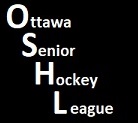Player Draft
The OSHL Executive creates eight new teams to start each season. This process is known as the player draft. The direct goal of the player draft is to attempt to make all teams competitive. The indirect goal is to allow OSHL members get to know their fellow members a little better. Each year you are in the league, chances are you will not know at least one person on your team at the beginning of the year.
At the end of every season, evaluation forms are distributed and collected by the league where players are asked to rate each of their teammates. Players can be rated from 3 to 8, where 8 represents the highest rating. These ratings are then reviewed by the executive before the next season.
Once the rating process has been completed, the executive then create teams by drafting players by position (forward, defence, goalie) randomly to a team with the principle of having teams equal in overall rating average.
For the most part, this process works well. However, after Week 7, the Executive reviews each team's progress and if necessary, an equalization process will follow.
Equalization Trades
Equalization is the process of making a trade to address issues of imbalance, specifically teams that are very strong or very weak. Each team has one executive member as a player, plus a separate team coordinator. After Week 7, several discussions occur involving executive members and coordinators, with issues and concerns being raised, and if necessary, one or more trades being made.
The first principle of equalization is to minimize changes to team rosters, as nobody likes to be traded. The goal is to ensure that every team is reasonably competitive. Nobody likes to come to the rink every week with the near certainty that their team will lose.
When it is necessary to move players between teams, the Executive is committed to not moving the same people every year. Thus, if you were traded in the previous two seasons, you can be assured that you will not be asked to move again the following year.
Decisions are rarely simple, as the absence of key players and the use of spares during the first seven games can complicate the process of assessing the strengths and weaknesses of the teams. So this information is taken into consideration.
With this background, your executive put a lot of thought behind the equalization changes. While no solution is perfect, the changes that are made represent their belief of best alternative available. We appreciate the spirit in which this decision is accepted by all those concerned, especially those who are asked to switch teams.
